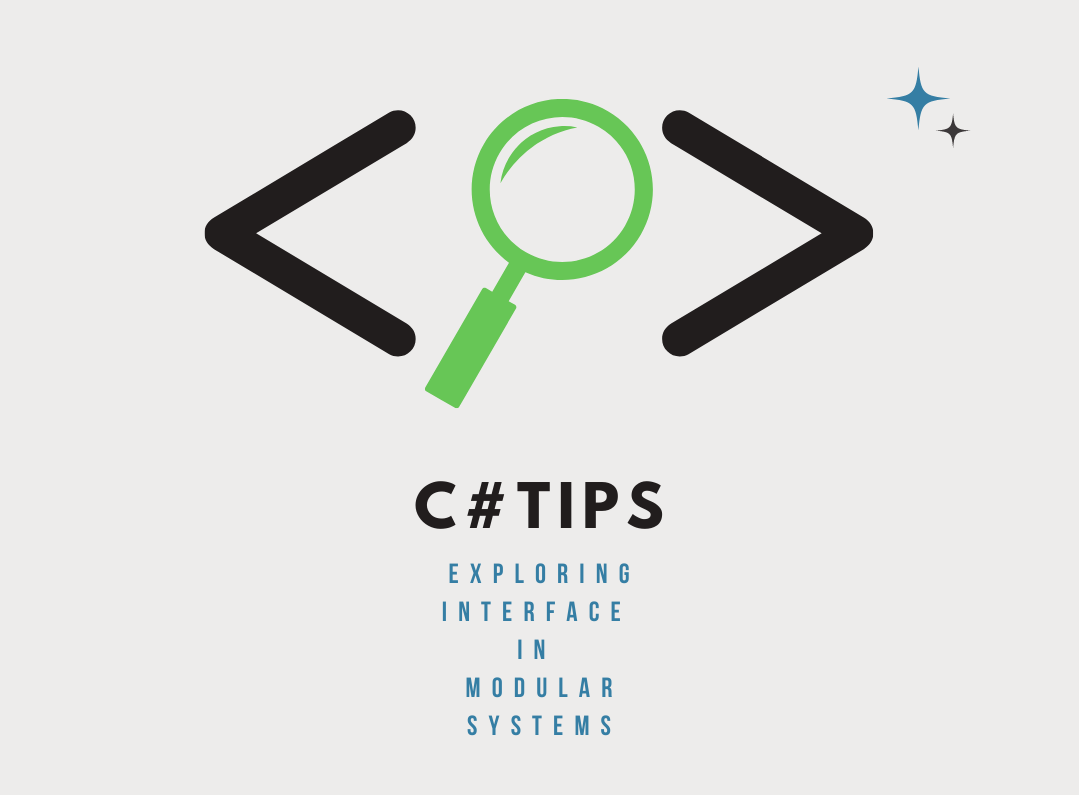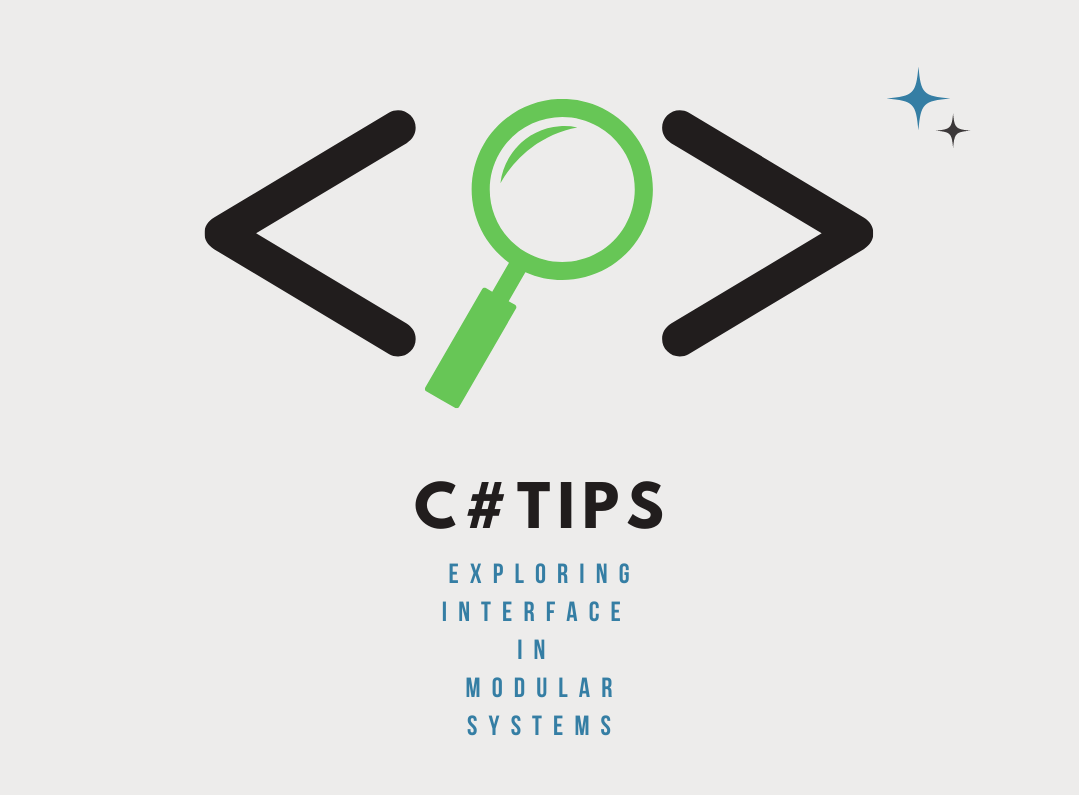
Introduction:
In the world of software engineering, interfaces are commonly used to define method signatures and facilitate dependency injection by injecting dependencies into class constructors. However, interfaces have a broader application beyond these traditional uses. One such application is plugin architecture, where interfaces play a pivotal role in enabling developers to visualize and harness the potential of diverse use cases.
This plugin architecture allows for the dynamic addition of plugins by implementing the IPlugin interface. You can create new plugins by implementing the IPlugin interface in different classes, providing unique names and specific logic for each plugin. The PluginManager can then execute all the registered plugins without knowing their specific implementation details.

1. Define the IPlugin interface:
The IPlugin interface defines the contract that all plugins must adhere to.
It includes two members:
- Name property: This property specifies the name of the plugin.
- Execute() method: This method represents the logic that will be executed by each plugin.
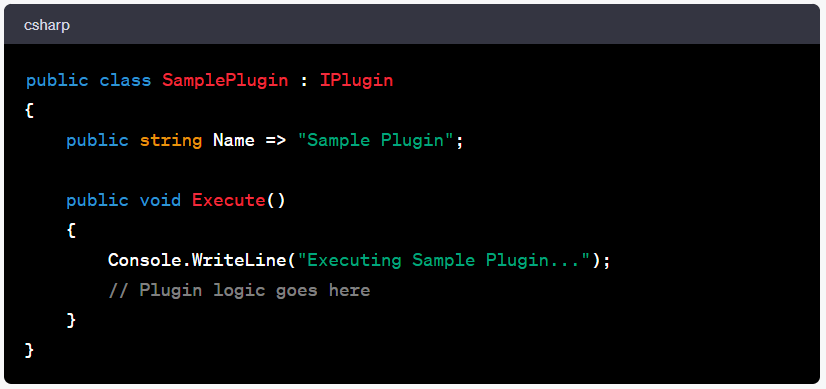
2. Implement the SamplePlugin class:
- The SamplePlugin class implements the IPlugin interface.
- It provides specific functionality for a sample plugin.
- In this example, it simply writes a message to the console when the Execute() method is called.
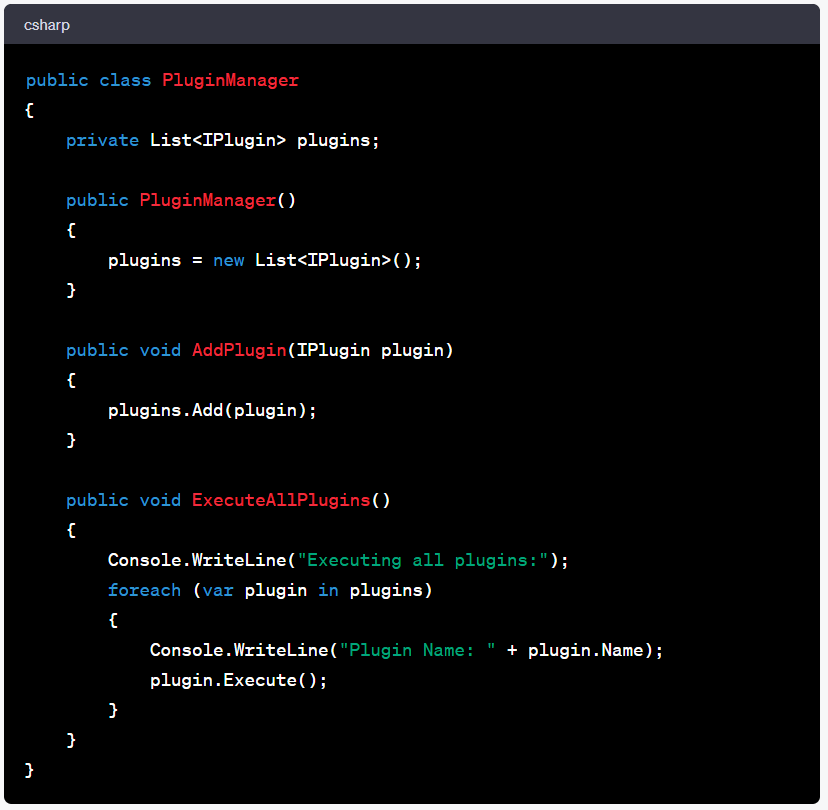
3. Implement the PluginManager class
The PluginManager class is responsible for managing and executing the plugins. It maintains a list of plugins as List to store multiple plugins. The AddPlugin() method allows adding new plugins to the manager.The ExecuteAllPlugins() method iterates over the registered plugins and executes them one by one.
- It retrieves the name of each plugin using the Name property.
- It calls the Execute() method of each plugin to perform its specific functionality.
Usage:
- In the Main method, an instance of the PluginManager class is created.
- A SamplePlugin object is instantiated and added to the PluginManager using the AddPlugin() method.
- Finally, the ExecuteAllPlugins() method is called to execute all the registered plugins.
This sample plugin architecture demonstrates the basic concept of a plugin system. It allows for the dynamic addition of plugins by implementing the IPlugin interface. Each plugin can have its own implementation of the Execute() method, providing specific functionality. The PluginManager acts as a central component to manage and execute the plugins without being aware of their specific implementations.
This architecture provides flexibility and extensibility, as new plugins can be easily created by implementing the IPlugin interface and registering them with the PluginManager. It allows for a modular and customizable system where different functionalities can be added or modified through plugins.
To use a second plugin in the sample plugin architecture, you can follow these steps:
Implement a new plugin class that implements the IPlugin interface. Let's call it SecondPlugin
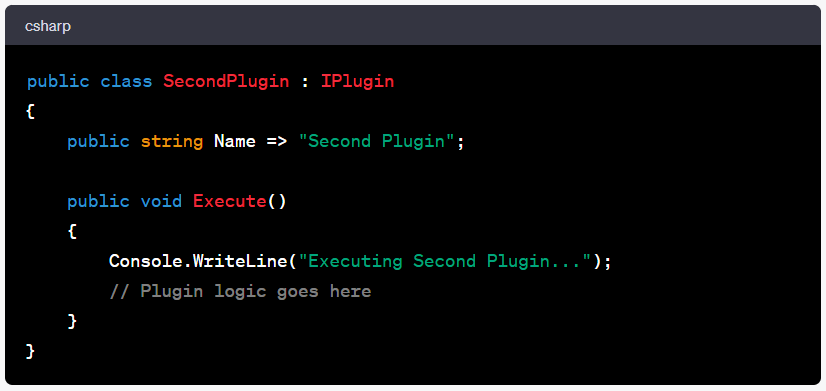
In the Main method or wherever you want to use the second plugin, create an instance of the SecondPlugin class. Add the second plugin to the PluginManager by calling the AddPlugin method. Execute all the plugins by calling the ExecuteAllPlugins method
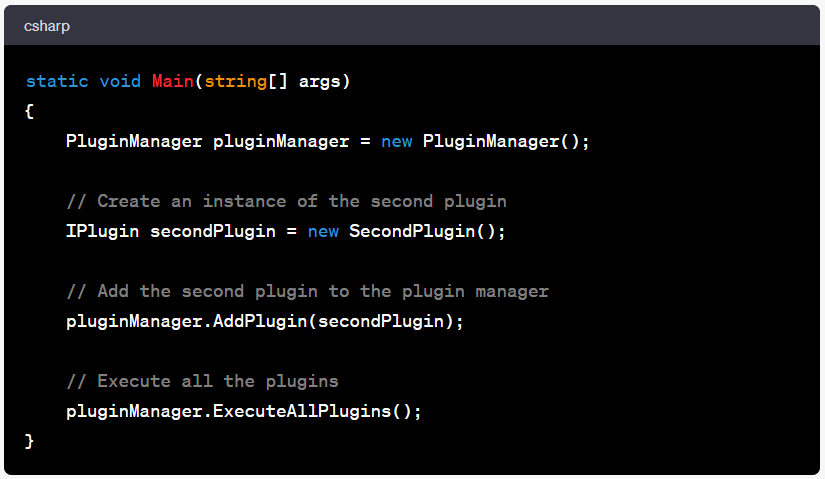
In a real-life web application, you can typically use the PluginManager in the startup class or any other appropriate location, depending on your application's architecture and requirements. Here's an example of how you can integrate the PluginManager in a web application
Create a PluginManager instance in the ConfigureServices method of the Startup class:
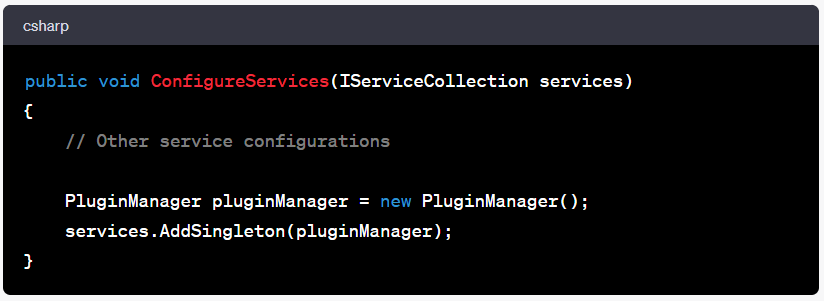
Register your plugins with the PluginManager. You can do this by implementing a method or using dependency injection to retrieve the plugins and add them to the manager. Here's an example using a method.
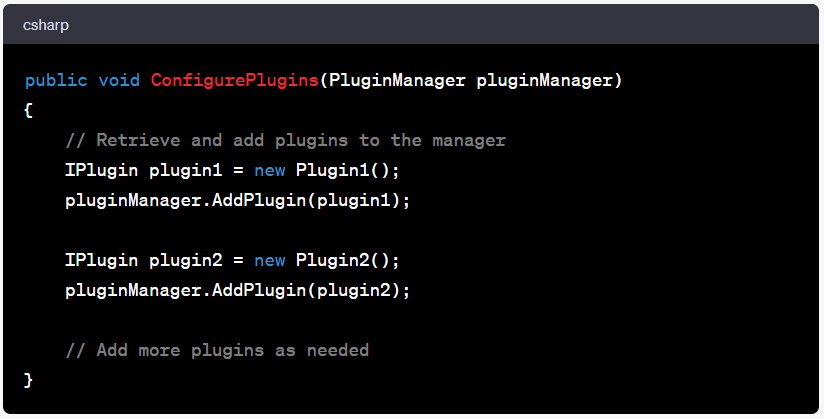
Call the ConfigurePlugins method in the Configure method of the Startup class:
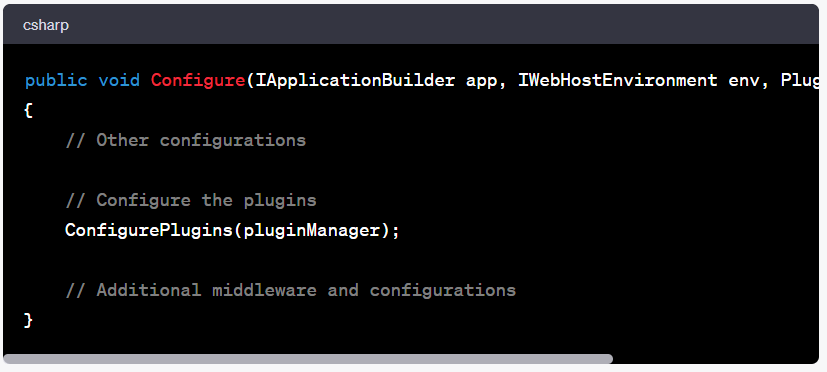
By following this approach, you can register the PluginManager as a singleton service in the application's dependency injection container. You can then retrieve the PluginManager instance wherever it's required, such as in controllers or other components, and utilize it to manage and execute the registered plugins.
The ConfigurePlugins method can be called within the Configure method to ensure the plugins are registered during application startup. This method allows you to add your plugins to the PluginManager and configure them based on your specific application needs.
In conclusion, interfaces serve as a foundational element for software engineers, not only for method signatures and dependency injection but also for designing plugin architectures. By embracing plugin architecture, developers can create applications that are flexible, scalable, and adaptable. Interfaces enable seamless integration of plugins, allowing for dynamic addition or removal of functionalities without modifying the core application logic.

